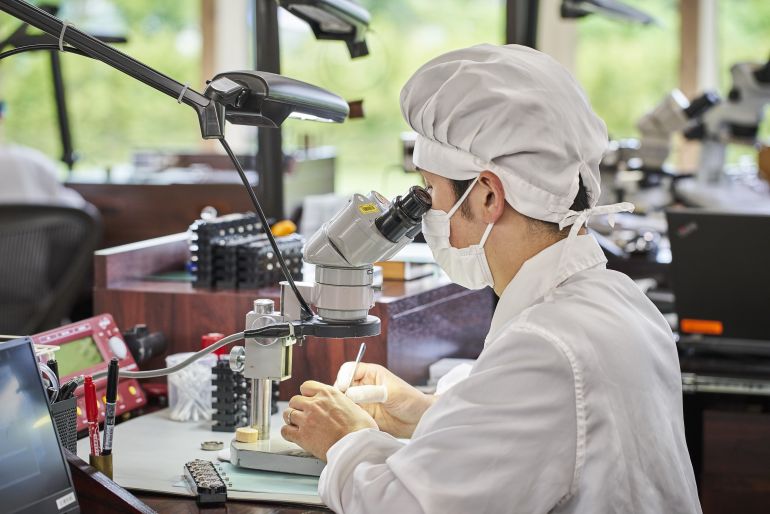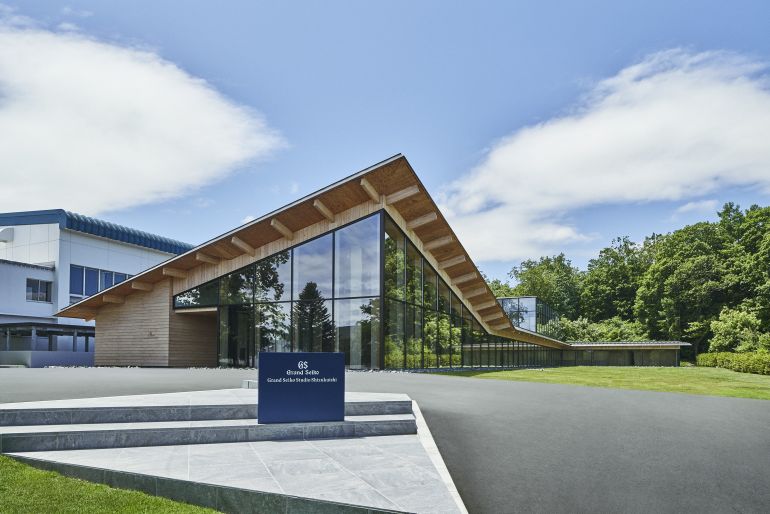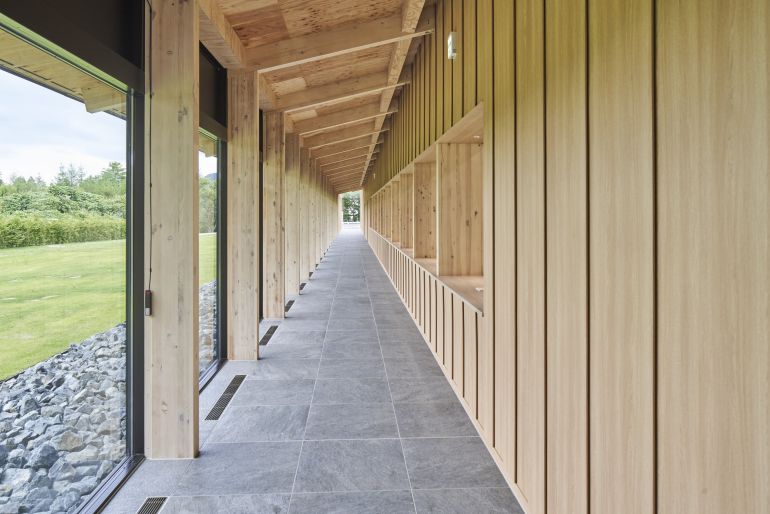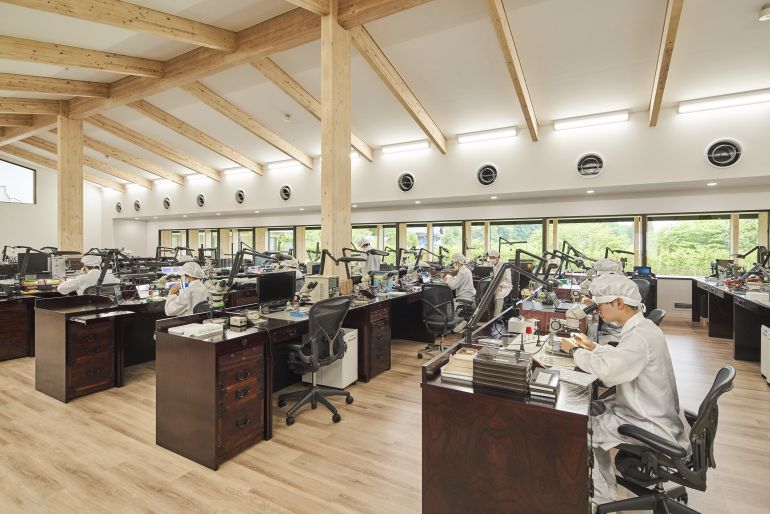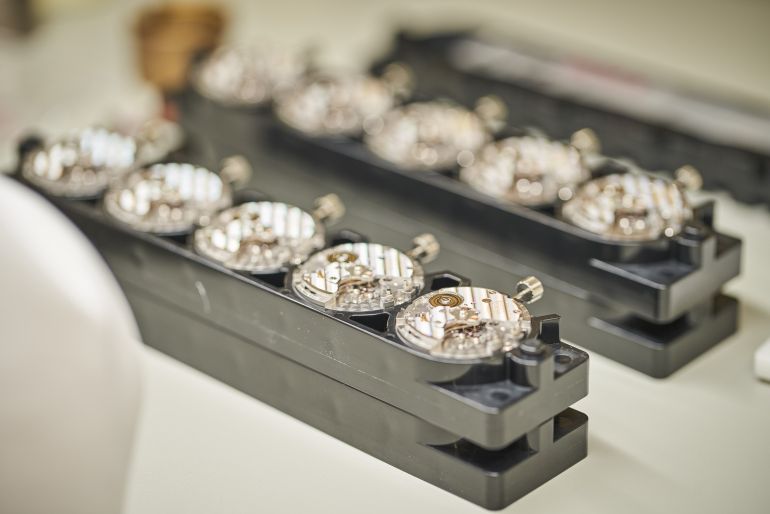The Shizukuishi Studio, in a quiet forest in Iwate Prefecture, northern Japan, and the Shinshu Studio, overlooking the Jonen and Hotaka mountain ranges, some 200 kilometres away from Tokyo. It is in these two places immersed in Japanese nature that the watches are born Grand Seiko. Two manufactures, therefore, each dedicated to specific movements where exterior and interior, natural and artificial, dialogue in harmony.
Inaugurated in the summer of 2020, the Shizukuishi Studio houses the craftsmen who assemble and adjust all the company's mechanical watches. A large building of over 2,000 square metres designed by Kengo Kuma, Japan's most influential architect in the world, and reflecting the importance of the environment for the brand.
From the choice of wood as a building element to the panorama enjoyed by the craftsmen, to the attention given to sustainability. As evidenced, for example, by the waste water treatment system to reuse its own water.
And the result is especially noticeable in the main area of the building, where the clocks are assembled. "It is a large and spacious room that has a roof construction with white-dyed pillars and conveys a feeling of purity due to the natural texture of the wood," explained the architect. The same applies to the exhibition space where visitors can immerse themselves in the history of Grand Seiko, and the room where they have the opportunity to try their hand at assembling a mechanical watch.
In a Seiko Epson facility in the city of Shiojiri, Nagano Prefecture, is the Shinshu Watchmaking Studio. A fully integrated manufacture where all quartz and spring-drive watches are made, from development to design, from movement production to manufacture, from assembly to adjustment of complete watches. Including dials, cases, hands and indices.
The building also boasts an area dedicated to jewellery watches and a space for Zaratsu polishing. This is a distortion-free mirror finish that only a few craftsmen have the talent and skills to perform.


